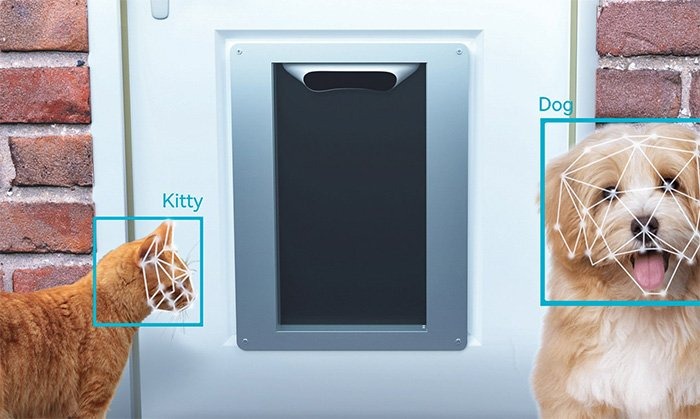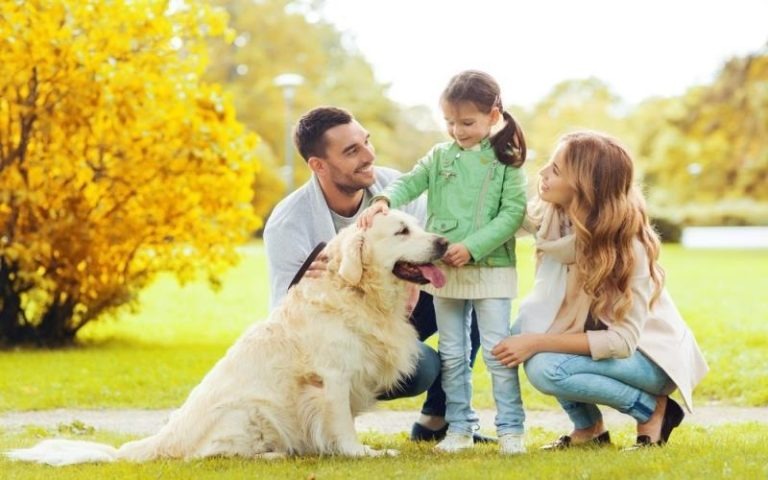
How to Deal with Pet Anxiety and Separation Issues
🐶 Pet Star
38 min read · 12, Aug 2025

Introduction
Pets bring endless joy and companionship, but just like people, they can experience anxiety—especially when separated from their favorite humans. Separation anxiety and general pet anxiety are common challenges many pet owners face. These behaviors can lead to destructive chewing, excessive barking, inappropriate elimination, and stress that harms both pets and their families.
Understanding how to recognize and manage anxiety in pets is essential for their mental well-being and your peace of mind. The good news is, with patience, the right strategies, and some simple training, you can help your pet feel calmer and more secure—even when you’re not around.
In this article, we’ll explore what causes pet anxiety and separation issues, signs to watch for, proven calming techniques, and daily routines to ease your pet’s stress. Let’s dive in. Dealing with pet anxiety and separation issues can be challenging for both pets and their owners. Pets, especially dogs and cats, are social animals that form strong attachments to their human companions. When left alone for extended periods or suddenly separated, they can experience stress, fear, and anxiety. Understanding the causes, signs, and effective ways to manage this anxiety is essential for the well-being of your furry friend and for maintaining harmony at home.
Pet anxiety, particularly separation anxiety, arises when a pet becomes overly dependent on their owner’s presence and feels distressed when left alone. This distress can manifest in various ways such as excessive barking, whining, destructive behavior, attempts to escape, pacing, drooling, or even loss of appetite. These behaviors are often a pet’s way of coping with the overwhelming feeling of loneliness and insecurity. It’s important to recognize these signs early so you can intervene before the anxiety worsens.
One of the primary causes of separation anxiety is the sudden or prolonged absence of the owner. Pets that have experienced trauma, changes in their environment, or inconsistent routines may be more prone to anxiety. Puppies and newly adopted pets, who have not yet formed a secure bond or routine, can also be vulnerable. Moreover, pets that are left alone for too long without adequate mental and physical stimulation may develop boredom, which can exacerbate anxious behaviors.
Addressing pet anxiety begins with preparation and prevention. A gradual approach to getting your pet comfortable with alone time is highly effective. Start by leaving your pet alone for very short intervals and gradually increase the duration. During this training, try to keep departures and arrivals low-key to avoid heightening your pet’s emotional reaction. For example, avoid dramatic goodbyes or overly enthusiastic greetings, which can unintentionally reinforce anxiety.
Creating a safe and comfortable space for your pet is another important strategy. This area should be familiar and secure, equipped with their favorite bedding, toys, and access to water. Some pets find comfort in having a crate or a small enclosed area that acts as their den. Adding items that carry your scent, like a worn T-shirt, can also soothe anxious pets by providing a sense of closeness to you.
Physical exercise plays a crucial role in managing anxiety. A well-exercised pet is usually calmer and less likely to engage in destructive behaviors. Regular walks, playtime, and interactive games help burn off excess energy and reduce stress. Mental stimulation is equally important; puzzle toys, treat-dispensing toys, and training sessions engage your pet’s brain and keep them occupied, making the alone time more manageable.
Behavioral training techniques, such as desensitization and counterconditioning, can help pets associate alone time with positive experiences. For example, pairing your departure with a special treat or toy that your pet only receives when you leave can build a positive connection to being alone. Over time, your pet learns to look forward to your absence rather than fearing it.
In some cases, calming products may provide additional support. These include pheromone diffusers that mimic natural calming signals, anxiety wraps or vests that apply gentle pressure, and natural supplements like chamomile or valerian root. However, it’s important to consult with a veterinarian before introducing any calming aids or medications to ensure they are safe and appropriate for your pet’s specific condition.
When anxiety is severe and persistent, professional help from a veterinarian or a certified animal behaviorist might be necessary. They can develop a tailored behavior modification plan or recommend medication to ease your pet’s distress. Therapy may include structured training, environmental changes, and sometimes prescribed anti-anxiety drugs to improve quality of life for both pet and owner.
Consistency and patience are key when managing pet anxiety. Changes won’t happen overnight, but with steady effort, many pets can learn to cope better with separation and feel more secure when alone. It is vital to maintain a routine so your pet knows what to expect each day. Feeding, walking, and playtimes should happen at regular intervals to create a sense of normalcy and control.
Communication and observation are also critical. Pay close attention to your pet’s behavior and emotional state to adjust your strategies accordingly. Sometimes, underlying medical issues can mimic or worsen anxiety symptoms, so regular veterinary check-ups are necessary to rule out health problems.
Additionally, enriching your pet’s environment can help reduce anxiety. Background noise like soft music, radio, or a TV left on can mask outside noises that might trigger distress. Interactive cameras or devices that allow you to check on or talk to your pet remotely can provide comfort to both of you.
For pets with separation issues, it’s helpful to avoid punishing anxious behavior as it only increases fear and confusion. Instead, reward calm and relaxed behavior to reinforce confidence and security. Teaching basic obedience commands and providing structure through training can also empower your pet, helping them feel more in control and less anxious.
Finally, socialization and companionship are important. If feasible, consider opportunities for your pet to interact with other animals or people, such as doggy daycare, playdates, or hiring a pet sitter. This reduces loneliness and offers stimulation when you are not available.
In summary, dealing with pet anxiety and separation issues involves understanding your pet’s needs and responses, gradual training to build tolerance to alone time, creating a secure environment, providing physical and mental stimulation, and seeking professional guidance when necessary. With love, patience, and consistency, you can help your pet overcome anxiety and live a happier, healthier life even when you’re apart.
Understanding Pet Anxiety and Separation Issues
Anxiety in pets is an emotional response to stress or fear. It can be triggered by changes in environment, loud noises, lack of socialization, or most commonly—separation from their owners.
Separation anxiety is a specific type of anxiety that occurs when your pet feels distress after being left alone or separated. Dogs and cats both can suffer from this, as well as some small mammals and birds.
Common causes of separation anxiety include:
- Sudden changes in routine or living situation
- Loss of a family member or pet
- Past traumatic experiences
- Lack of proper socialization or mental stimulation
- Being confined to a small space for long periods
Signs Your Pet May Have Anxiety or Separation Issues
It’s important to identify these signs early to prevent worsening behaviors:
- Excessive barking, howling, or meowing when alone
- Destructive chewing or scratching near doors and windows
- Pacing, trembling, drooling, or panting without physical cause
- Attempting to escape or dig under doors and fences
- Loss of appetite or refusing to eat
- Urinating or defecating indoors despite house training
- Clingy behavior or following you obsessively
- Over-grooming or self-harm (especially in cats)
If your pet shows these signs mostly when you’re preparing to leave or right after you leave, separation anxiety is likely.
How to Help Your Pet: Proven Strategies
1. Create a Safe, Comfortable Space
Designate a cozy area with your pet’s bed, toys, and maybe a piece of your worn clothing. This creates a sense of security and familiarity when you’re away.
2. Practice Gradual Desensitization
Start by leaving your pet alone for very short periods and gradually increase the duration. This helps them get used to your absence without panic.
3. Avoid Dramatic Goodbyes and Reunions
Keep departures and arrivals low-key to avoid heightening anxiety. Avoid prolonged hugs or excited greetings.
4. Use Interactive Toys and Puzzle Feeders
These keep your pet busy and distracted, reducing their focus on your absence.
5. Provide Regular Exercise and Mental Stimulation
A tired pet is a calm pet. Daily walks, play sessions, and training exercises reduce stress and burn excess energy.
6. Consider Calming Aids
Natural options include pheromone sprays, calming collars, or supplements like CBD oil (consult your vet first). Soft music designed for pets can also soothe nerves.
7. Establish a Consistent Routine
Predictability reduces stress. Feed, walk, and play at the same times daily so your pet knows what to expect.
Training Tips to Reduce Anxiety
- Teach “Stay” and “Settle” Commands: Reward calm behavior so your pet learns to relax on cue.
- Practice Leaving Cues Without Leaving: Pick up keys, put on shoes, then sit down again without leaving—so your pet doesn’t associate these actions with being abandoned.
- Use Crate Training Positively: If your pet feels safe in a crate, use it as a cozy den rather than punishment. Gradually increase crate time.
- Counter-Conditioning: Pair your absence with treats or toys that your pet loves. This changes their emotional response from anxiety to anticipation of something positive.
Daily Routine to Manage Pet Anxiety
Morning:
- Start with a brisk walk or play session to burn off energy
- Feed using a puzzle feeder or scatter food to encourage natural foraging
- Spend 10 minutes of calm bonding time (gentle petting, massage)
Midday:
- Provide safe chew toys or a treat-filled snuffle mat
- Practice short separation exercises by stepping out of the room
- Play calming music or leave a TV on low volume
Evening:
- Engage in interactive play like fetch or hide-and-seek
- Conduct a short training session focusing on “settle” commands
- Wind down with quiet time and gentle brushing or cuddling
Tips for Managing Separation Anxiety When You Leave
- Leave an item with your scent near your pet’s resting area
- Avoid long eye contact or emotional goodbyes
- Give a special “going away” treat or toy
- Keep departures brief and calm
- If possible, use dog walkers, pet sitters, or day-care during longer absences
When to Consult a Veterinarian or Behaviorist
If anxiety behaviors worsen or persist despite your efforts, seek professional help. A vet can rule out medical causes and may prescribe medication temporarily. Certified animal behaviorists can create personalized behavior modification plans.
Common Myths About Pet Anxiety: Busted!
“Separation anxiety means your pet is spoiled.”
→ False. Anxiety is a genuine emotional response, not bad behavior.
“Punishing anxious behavior helps.”
→ No. Punishment increases stress and worsens anxiety.
“Only dogs get separation anxiety.”
→ Cats, rabbits, birds, and other pets can suffer anxiety too.
“Ignoring the problem will make it go away.”
→ Ignoring anxiety often makes it worse over time.
“Medication is the only solution.”
→ Medication can help, but training and environmental changes are key for long-term success.
Additional Calming Activities & Enrichment
- Scent Games: Hide treats around the house to engage your pet’s powerful nose
- Massage & Touch Therapy: Slow, gentle strokes reduce cortisol and promote relaxation
- DIY Calming Toys: Fill old socks with dried lavender or chamomile for a soothing scent
- Interactive Play: Puzzle feeders, tug toys, and chasing games help distract and relax your pet
Sample Day to Reduce Pet Anxiety
- Wake your pet with calm praise and play
- Feed a slow-eating, enriched meal (snuffle mat or puzzle feeder)
- Take a long walk with varied scents and sights
- Leave for a short period after a calm “goodbye” cue and reward calmness upon return
- Play quietly with toys mid-afternoon
- End the day with a gentle grooming and soft music session
Conclusion
Dealing with pet anxiety and separation issues requires patience, empathy, and consistent effort. By recognizing your pet’s stress signals and providing calming, enriching experiences, you strengthen their confidence and your bond. Remember, every pet is unique, so try different techniques and observe what works best.
With daily love, exercise, mental stimulation, and gentle training, your pet can learn to feel safe—even when alone. And as their anxiety decreases, your home will be filled with peace, happiness, and wagging tails or gentle purrs once again.
Start small, stay consistent, and watch your pet blossom into a calmer, happier companion.
Q&A Section
Q1:- What is pet anxiety and how does it manifest in animals?
Ans :- Pet anxiety is a stress response to changes or perceived threats, often showing as pacing, excessive barking, destructive behavior, or withdrawal.
Q2:- What causes separation anxiety in pets?
Ans :- It usually stems from sudden changes like moving, new family members, long absences, or traumatic past experiences, making pets fearful when left alone.
Q3:- How can a pet owner identify if their pet has separation anxiety?
Ans :- Signs include whining, scratching doors, drooling, inappropriate elimination, and restlessness specifically when the owner prepares to leave or is absent.
Q4:- What are the best strategies to reduce pet anxiety before leaving home?
Ans :- Gradual desensitization, providing comfort toys, using calming pheromone sprays, and keeping departures low-key can ease anxiety.
Q5:- How can exercise and mental stimulation help anxious pets?
Ans :- Regular physical activity and interactive toys tire pets out and distract them, reducing stress and preventing destructive behaviors.
Q6:- When should a pet owner consult a veterinarian or behaviorist?
Ans :- If anxiety symptoms persist or worsen despite home strategies, professional help is needed for diagnosis and possible medication or behavioral therapy.
Q7:- Can training techniques like crate training assist with separation anxiety?
Ans :- Yes, crate training offers a safe, den-like environment that can comfort pets, but it must be introduced gradually and positively.
Q8:- Are there natural remedies or supplements to help calm anxious pets?
Ans :- Some natural options include CBD oil, chamomile, valerian root, and specially formulated calming treats, but consultation with a vet is essential.
Q9:- How important is maintaining a routine for pets with anxiety?
Ans :- Very important; a consistent feeding, walking, and play schedule provides predictability, which reduces stress and insecurity.
Q10:- What role does owner behavior play in managing pet anxiety?
Ans :- Owners who stay calm, avoid emotional goodbyes, and reinforce positive behaviors help pets feel safe and confident.
Similar Articles
Find more relatable content in similar Articles

Smart Homes for Pets: Automated Feeders, Doors, and Mo..
As smart home technology advan.. Read More

How Climate Change Affects Wild and Domestic Animals...
Climate change is dramatically.. Read More

How Pets Strengthen Family Bonds...
Pets are more than just compan.. Read More

Sustainable Pet Products: What to Look for in 2025...
As sustainability becomes a ce.. Read More
Explore Other Categories
© 2024 Copyrights by rPets. All Rights Reserved.